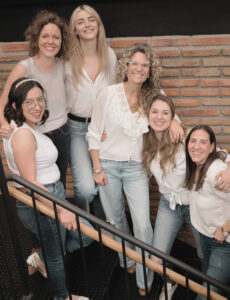Halloween vs. Día de los Muertos –
In less than two weeks the time has come again: In Mexico the Día de los Muertos, in english “Day of the Dead”, is celebrated. The Día de los Muertos is similar to Halloween, but somehow quite different. Where do the two holidays actually come from and how are they similar or different? To clarify this question, we did a little research and made a comparison:
When Are they Celebrated?
Halloween is celebrated on October 31, whereas Día de los Muertos is celebrated for a full three days, from October 31 to November 2.
Origin:
Halloween, also called “All Hallow’s Eve”, does not come from the USA, as most people assume, but from Ireland. The Celts aligned their calendars according to the agricultural cycle of the crops and celebrated their end of the season with the festival of “Samhain” on the evening of the eleventh full moon of the year. That is the Gaelic word for November. The Celts believed that this evening the “boundary between the worlds” opened and the dead would come back to visit their relatives. They showed the spirits of the deceased the way using lights. The “Samhain” festival survived the Celts and the Irish changed the custom. In the 19th century, Halloween finally came to the USA through Irish immigrants who continued their traditions in memory of their homeland. In the following years, the festival changed a lot and since the 1990s, the customs of Halloween in its American style have spread through France and the southern German-speaking regions all over Europe.
The Día de los Muertos dates back to the time before the Spanish conquered Mexico. Life and death in ancient Mexico were not unconditional opposites, but were embedded in a natural process. Death was an extended life and vice versa. So it was not the real end of life, but only a phase in the infinite cycle. Life, death and resurrection were stages of a cosmic process that was repeated over and over again. The Aztecs’ belief and the resulting serenity towards death is still reflected in the Mexican way of dealing with life and death. After the Spanish conquered Mexico, the death-related celebrations took a new shape, influenced by the customs and beliefs of the settlers. Thanks to this mixture, the customs that we know today as Día de los Muertos were created, according to UNESCO, a masterpiece of oral and intangible world cultural heritage.
Meaning:
At the beginning of November, the not particularly productive period began in Ireland and with it a rather cloudy phase of daily life. It was believed that at that time the border world between the living and the dead was particularly close and the souls of those who had died during the year searched for human bodies at night. They were afraid of the dead and therefore disguised themselves on Halloween with gruesome masks and costumes to scare off the ghosts and also placed hollowed-out, illuminated pumpkins, the so-called “Jack-O-Lanterns” as guards against the evil spirits.
Following the Mexican popular belief, the deceased pay a visit to their relatives, families and friends on the night of November 2, the Día de los Muertos, to celebrate and visit with them.
How do you celebrate today?
Typical for today’s Halloween are all kinds of disguises – especially the creepy ones – as well as the hollowed-out pumpkins which are carved and converted into lanterns and exuberant parties. In addition, children disguised as witches, ghosts or demons move from house to house in order to get sweets with the saying “Trick or Treat”.
One of the most important figures in the context of the Día de los Muertos is the famous skeleton lady “La Catrina” with her white hat with ruffles, poppies and ostrich feathers, a white dress with black stripes and her traditional make-up. Mexicans dress up and put on catrina style make-up. Colourful altars are set up all over the country and decorated with things that represent the four basic elements of nature: fruit symbolizes the element earth and pampers the souls with their sweet aroma. Tenderly scissor-cut images made of tissue paper represent the wind and vessels filled with water quench the thirst of the souls after their long journey from the afterlife. Candles light the graves and are the fire elements.
What are Typical Dishes?
On Halloween, many pumpkin dishes and all kinds of creepy-looking snacks and dishes are prepared. Of course, plenty of sweets should not be missed!
During the celebrations of Día de los Muertos, the dead souls are offered all sorts of culinary specialties. Of course, the living can also taste the delicacies. There is a traditional sweet bread (pan de muerto), sugar skulls (calaveras de dulce) and skeletons and coffins made of marzipan.. There is also tequila and mezcal as well as the national drink of Mexico, pulque (fermented juice from agaves).
If you are in Mexico for Día de los Muertos, a trip to Michoacán is definitely rercommended. We are of course happy to help you plan and reserve hotels and transfers!






Comments
ed meds
is erectile dysfunction reversible
erectile medication over counter
erectile dysfunction drugs
erectile dysfunction treatment
erectile dysfunction when viagra doesn t work
erectile supplements
can erectile dysfunction be fixed
erectile dysfunction drugs
erectile examination
help with erectile dysfunction
discount erectile dysfunction medications